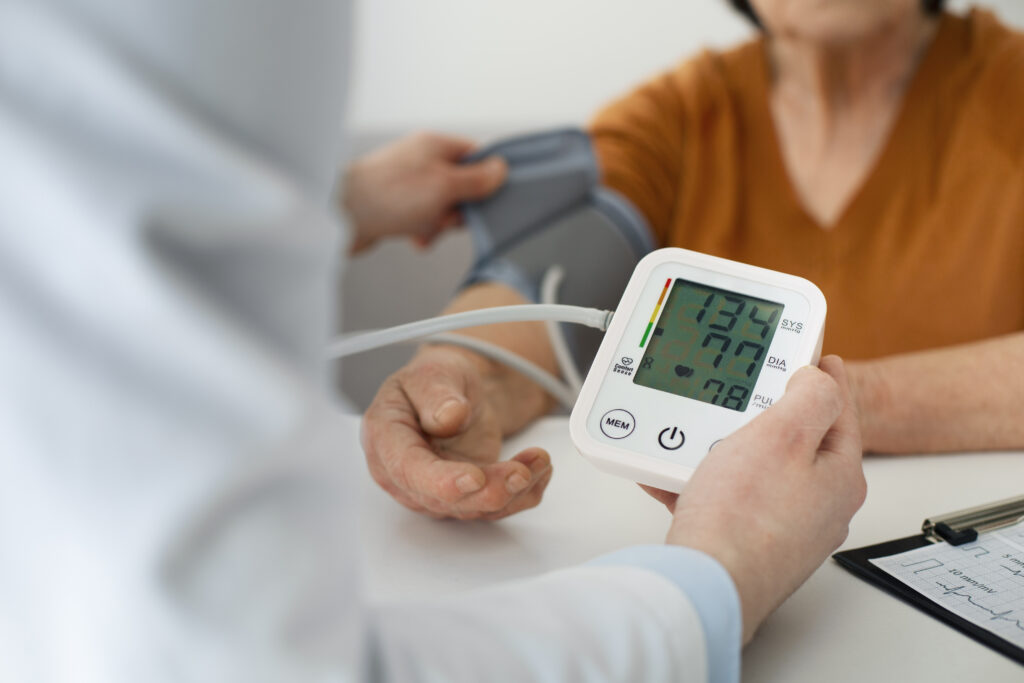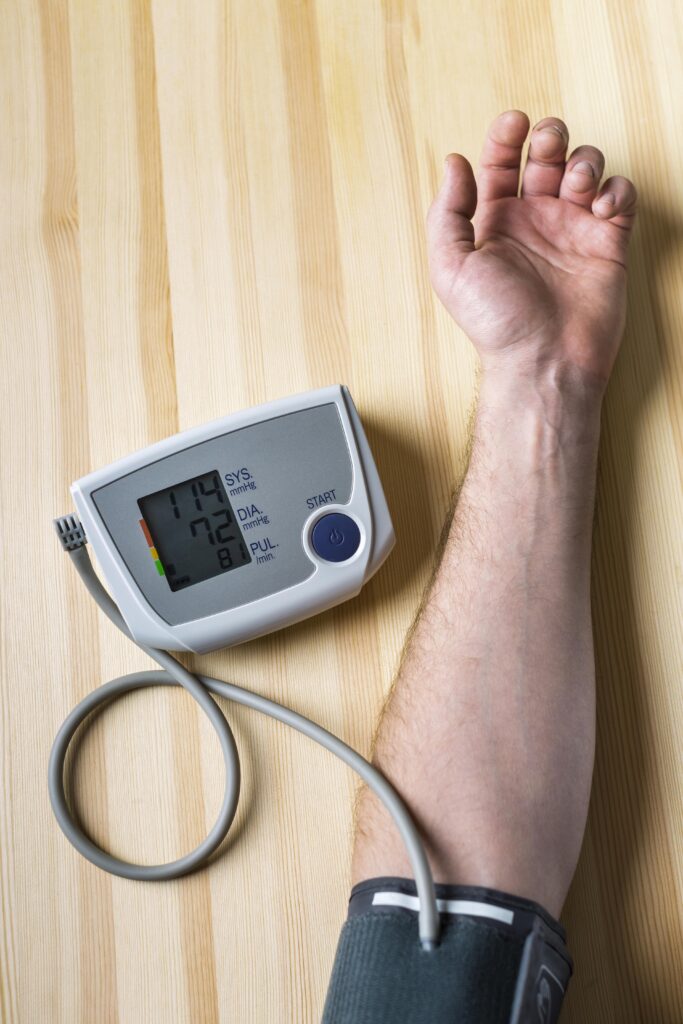Understand what blood pressure is, how it’s measured, and why maintaining a healthy level is vital for long-term heart and overall health.

Table of Contents
Understanding the Basics
Blood pressure is one of the most vital indicators of your overall health—yet it’s often misunderstood or overlooked. Whether you’re in your 20s or your 70s, knowing your blood pressure range and understanding what those numbers mean could be the key to preventing serious health issues down the line.
In this comprehensive guide, we’ll explain what blood pressure is, why it matters, how it’s measured, and what’s considered normal blood pressure by age. We’ll also explain how systolic and diastolic blood pressure differ, and explore the potential health risks linked to both elevated and reduced blood pressure levels
What Is Blood Pressure?
Blood pressure refers to the pressure your blood applies on the walls of your arteries as it circulates through your body, driven by your heart’s pumping action. It’s measured in millimeters of mercury (mmHg) and recorded using two numbers:
Systolic blood pressure (the upper number) measures the pressure in your arteries when your heart contracts and pumps blood out.
Diastolic blood pressure (the lower number) reflects the pressure when your heart relaxes between beats.
For instance, a blood pressure reading of 120/80 mmHg means the systolic pressure is 120, while the diastolic pressure is 80
Why Blood Pressure Matters
Maintaining a healthy blood pressure range is essential because both high and low readings can lead to serious health problems. Blood pressure that’s too high can damage your arteries and organs over time, while pressure that’s too low may result in fatigue, dizziness, or fainting.
Unchecked blood pressure abnormalities can lead to:
- Heart attacks
- Stroke
- Kidney disease
- Vision loss
How Is Blood Pressure Measured?

The most common way to measure blood pressure is by using a device called a blood pressure monitor, or sphygmomanometer. There are two types:
- Manual (with a cuff and stethoscope)
- Digital (automated machines for home or clinic use)
To get an accurate reading:
Sit quietly for 5 minutes before measuring
Arm should be at the level of your heart.
Avoid caffeine, smoking, or exercise 30 minutes before
Understanding the Blood Pressure Normal Range
Knowing your numbers is crucial. Here’s the general classification:
| Category | Systolic (mmHg) | Diastolic (mmHg) |
|---|---|---|
| Normal blood pressure | Less than 120 | Less than 80 |
| Elevated | 120–129 | Less than 80 |
| High blood pressure (Stage 1) | 130–139 | 80–89 |
| High blood pressure (Stage 2) | 140 or higher | 90 or higher |
| Hypertensive crisis | Over 180 | Over 120 |
| Low blood pressure | Below 90 | Below 60 |
These numbers can vary slightly depending on your health, age, and medical history.
What Is Normal Blood Pressure by Age?
As we age, our arteries naturally stiffen, which can affect blood pressure. Here’s a rough guide to what is normal blood pressure by age:
| Age Group | Normal Blood Pressure Range |
|---|---|
| Children | 90/60 – 100/70 |
| Teens | 110/70 – 120/80 |
| Adults (20–40) | 110/70 – 120/80 |
| Middle Age (40–60) | 115/75 – 130/85 |
| Seniors (60+) | 120/80 – 140/90 |
Always consult your doctor for personalized targets, especially if you have diabetes, kidney disease, or cardiovascular risks.
What Is Systolic Blood Pressure?
The systolic blood pressure is the higher number in a BP reading. It gauges the force exerted on your arteries each time your heart contracts.
A high systolic reading is often more predictive of cardiovascular events, especially in older adults. Controlling systolic pressure is crucial for reducing the risk of strokes and heart attacks

What Is Diastolic Blood Pressure?
The diastolic blood pressure is the lower number. It measures pressure in the arteries when the heart is resting between beats.
Though diastolic pressure tends to get less attention, chronically high diastolic readings are linked to heart damage and increased cardiovascular risk, especially in younger people.
Causes of High Blood Pressure

Hypertension, can be caused by:
- Poor diet (especially high salt intake)
- Sedentary lifestyle
- Obesity
- Smoking and alcohol
- Chronic stress
- Kidney disease
- Family history
Because hypertension usually shows no symptoms, it is often called the ‘silent killer
Risks of Low Blood Pressure
Although less commonly discussed, low blood pressure (hypotension) is equally important to understand. Causes include:
- Dehydration
- Blood loss
- Endocrine problems
- Certain medications
- Heart conditions
Symptoms might include dizziness, fainting, and blurred vision. If persistent, it needs evaluation to rule out serious causes.
Using a Blood Pressure Machine at Home
Monitoring your blood pressure regularly at home can help detect changes early. When using a blood pressure machine at home, keep these tips in mind:
- Choose a validated upper-arm device
- Take readings at the same time each day
- Keep a log to show your healthcare provider
- Avoid wrist and finger monitors unless recommended, as they’re often less accurate.
Tips to Maintain a Healthy Blood Pressure

Maintaining a normal blood pressure is possible with simple lifestyle changes:
- Maintain a nutritious diet low in sodium and rich in fruits and vegetables, like the DASH diet recommends.
- Engage in moderate physical activity for at least 30 minutes on most days each week.
Quit smoking - Limit alcohol
- Manage stress with techniques like yoga, meditation, or therapy
- Get enough sleep
- For some, medication may also be necessary—but even then, lifestyle still plays a key role.
Conclusion
Understanding blood pressure isn’t just for doctors—it’s for everyone. By learning the difference between systolic and diastolic blood pressure, knowing your normal blood pressure range, and recognizing the risks of both high and low blood pressure, you empower yourself to take charge of your health.
Whether you’re using a blood pressure machine at home or getting it checked at the clinic, make it a habit. Regular monitoring and early action can prevent major health issues later.
Your heart is your most vital organ—take care of it by keeping your blood pressure in check.


Pingback: High Blood Pressure: Causes, Symptoms & Treatment - Access My Doctor
Pingback: The DASH Diet 101: Your New Best Friend Against Hypertension - Access My Doctor